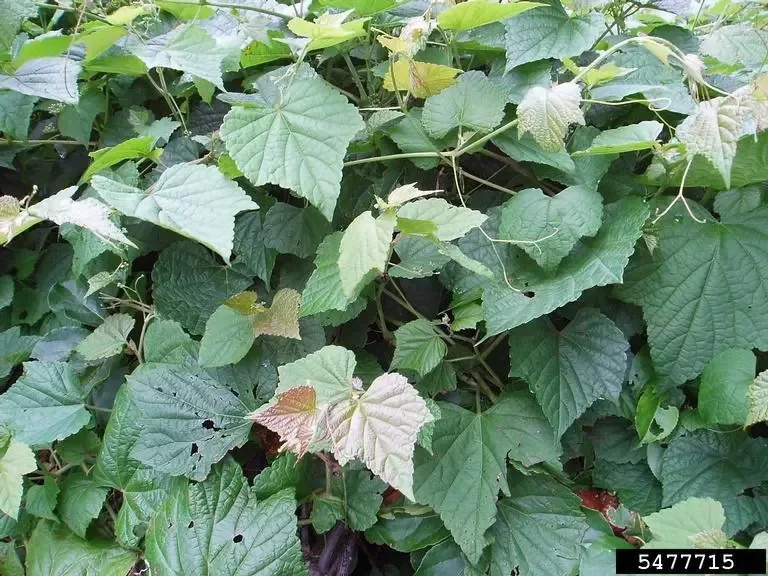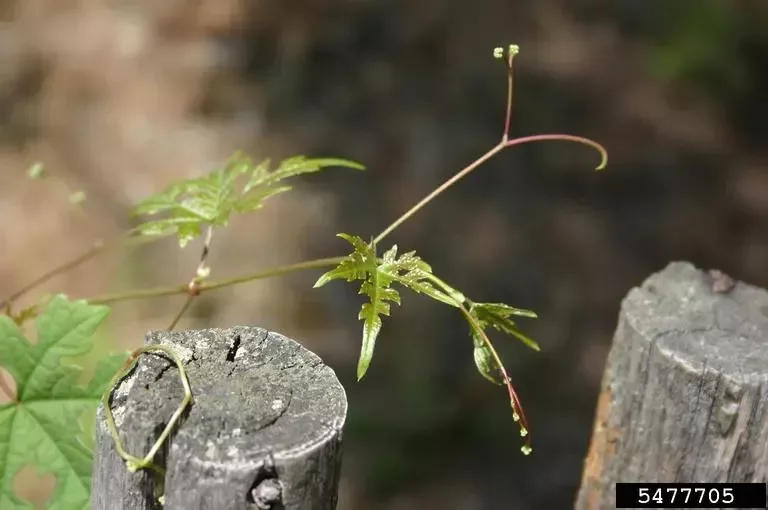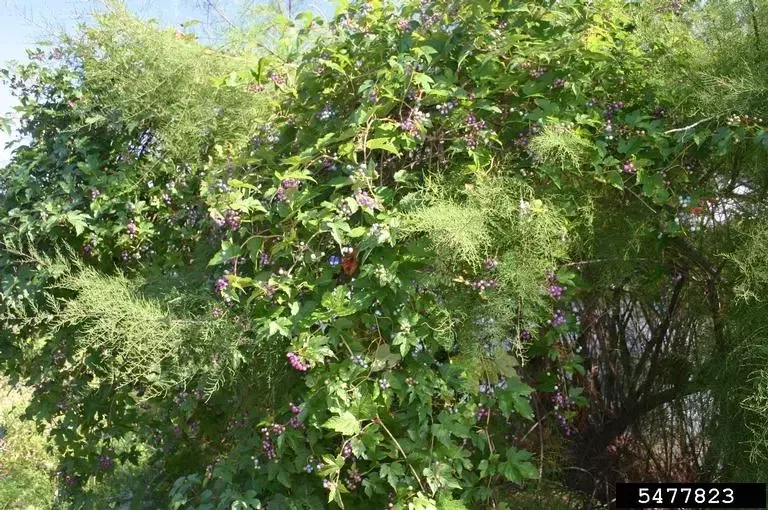
Porcelain berry is a perennial, deciduous vine that can grow up to 20 feet long. Leaves are alternate, simple, variably shaped (from heart shaped to deeply lobed) with toothed edges, and shiny undersides with hairs only along the veins. The vine produces small greenish-yellow flowers that develop into hard berries in various shades of white, yellow, lilac, teal or green that mature to a bright blue. The pith is white.


Porcelain berry spreads primarily by seed, which can be transported by wildlife, humans or water.
Porcelain berry has established populations in southwestern Pennsylvania and the Finger Lakes PRISM region. It was first reported in the WNY PRISM region in September 2020 by a community scientist. There are currently two known active porcelain berry sites in the WNY PRISM region.

Porcelain berry grows quickly and forms thick mats that outcompete native vegetation for light, water, nutrients and space. Once established, it will climb and shade out young shrubs and seedlings on the forest floor. Seeds are distributed by birds, small mammals and water. A high seed germination rate accompanied by its propagation through root fragments makes this vine species of particular concern and difficult to manage.



Herbicide treatment is the most effective control method for porcelain berry and should include either cut-stump or foliar spray treatments in the fall. Vines can also be manually removed to prevent seed dispersal, but care must be taken to pull out the entire root system to prevent resprouting. Follow up treatments in subsequent years is necessary.
